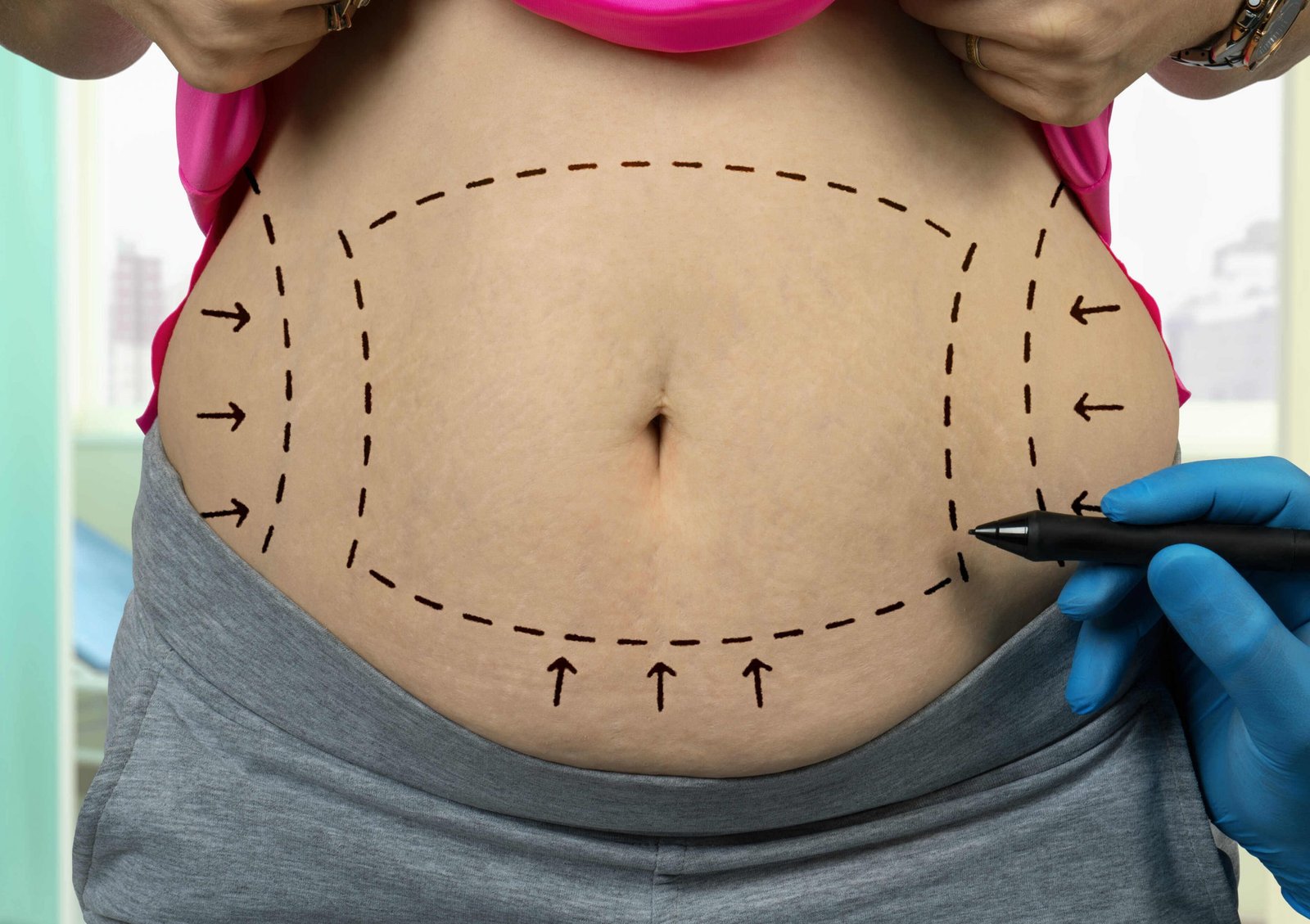Undergoing a tummy tuck, or abdominoplasty, is a significant surgical procedure that requires careful post-operative care to ensure optimal healing and results. A mini tummy tuck, which involves a smaller incision and less extensive surgery, also requires careful post-operative care. One crucial aspect of the tummy tuck recovery process is getting proper sleep. How you sleep can affect your healing process, comfort levels, and overall recovery time. It is essential to be treated by a board-certified plastic surgeon to ensure proper healing and successful results. Here is a comprehensive guide on how to sleep after a tummy tuck, covering everything from recommended sleeping positions to tips for enhancing comfort and promoting healing.
Key Takeaways on How to Sleep After Tummy Tuck
- Optimal Sleeping Position: Sleeping on your back with your upper body elevated helps reduce pressure on incisions and minimizes swelling.
- Use of Pillows: Support your body with pillows to prevent rolling onto your stomach or sides, which can strain the surgical area.
- Elevated Sleep Benefits: Elevation aids in better breathing, reduces the risk of respiratory issues, and promotes fluid drainage to minimize inflammation.
- Monitor Mobility: Incorporate gentle movements and short walks to improve circulation and reduce the risk of blood clots.
- Pain Management: Follow prescribed pain management guidelines to ensure comfortable and restful sleep, aiding in a quicker recovery.
- Compression Garments: Wearing compression garments during sleep is essential for limiting movement, reducing inflammation, and supporting the abdominal muscles. It is crucial to wear compression garments as they help reduce swelling and provide support to the abdomen after surgery.
Understanding the Importance of Sleep After Tummy Tuck Recovery
The Role of Sleep in Recovery
Sleep is a critical component of the healing process after any surgery, including a tummy tuck. During sleep, your body goes into repair mode, promoting tissue regeneration and reducing inflammation. Quality sleep helps in:
- Boosting Immune Function: Proper rest strengthens the immune system, aiding in the prevention of post-surgical infections.
- Reducing Swelling: Sleep helps to minimize swelling and inflammation, which are common after surgery.
- Accelerating Tissue Repair: The body repairs damaged tissues and regenerates cells during deep sleep stages, which is crucial for recovery.
- Improving Mood and Energy Levels: Adequate sleep improves mood and energy levels, which can positively impact your overall recovery experience.
The Challenges of Sleeping After a Tummy Tuck
Sleeping comfortably first few weeks after a full tummy tuck surgery can be challenging due to:
- Incision Discomfort: The surgical site may be tender and painful, making it difficult to find a comfortable sleeping position.
- Swelling and Bruising: Swelling and bruising around the abdomen can cause discomfort and disrupt sleep.
- Movement Restrictions: Limited mobility due to the surgical procedure can make it hard to change positions during sleep.
Sleeping in a slightly bent position is essential to avoid pulling on the stitches and promote proper healing.
Recommended Sleeping Positions
The Best Sleeping Position: On Your Back with Elevated Upper Body
The most recommended sleeping position after a tummy tuck is on your back with your upper body elevated. This position helps to:
- Reduce Swelling: Elevating the upper body minimizes swelling by promoting better blood circulation.
- Prevent Tension on Incisions: Sleeping on your back reduces pressure on the incision site, preventing strain and tension that can hinder healing.
- Enhance Comfort: Elevation helps in managing pain and discomfort, allowing for a more restful sleep.
Maintaining a slightly bent position helps to keep loose skin, avoid pulling on the stitches and supports a comfortable and efficient recovery.
To achieve this position:
- Use a Recliner: Sleeping in a recliner can naturally keep your body elevated and reduce the risk of rolling over during the night.
- Pillows: If you don’t have a recliner, use multiple pillows to prop up your upper body. Place pillows under your knees to maintain a slight bend, which reduces tension on the abdominal area.
Alternative Sleeping Positions
While sleeping on your back with elevation is ideal, some patients may find comfort in alternative sleep positions:
- On Your Side: If back sleeping is uncomfortable, sleeping on your side can be an alternative. Place a pillow between your legs and use additional pillows to support your back and keep your body aligned.
- Semi-Fowler’s Position: This is a slightly reclined position, similar to sitting in a hospital bed. It involves raising the head of the bed or using pillows to create a gentle incline.

Tips for Enhancing Comfort and Promoting Healing
Pain Management
Managing pain effectively is crucial for getting quality sleep after a tummy tuck. Here are some tips:
- Follow Prescribed Medications: Take pain medications as prescribed by your surgeon to manage discomfort.
- Cold Compresses: Applying cold compresses to the surgical area can help reduce swelling and numb pain.
- Stay Hydrated: Proper hydration helps to flush out anesthesia and reduces swelling.
Creating a Sleep-Friendly Environment
A conducive sleep environment can significantly enhance your comfort and quality of sleep. Consider the following:
- Comfortable Bedding: Invest in high-quality, supportive pillows and a comfortable mattress.
- Cool and Dark Room: Keep your bedroom cool and dark to promote better sleep. Use blackout curtains and a fan or air conditioning if needed.
- Noise Reduction: Minimize noise disturbances with earplugs or a white noise machine.
Gentle Mobility and Exercises
Incorporate gentle mobility and exercises into your daily routine to promote blood circulation and prevent stiffness:
- Walking: Take short, frequent walks to keep your blood flowing and prevent blood clots.
- Stretching: Gentle stretching exercises, as recommended by your surgeon, can help maintain flexibility and reduce discomfort.
Monitoring and Adjusting Your Sleep Routine
Monitoring Your Progress
Regularly monitor your recovery progress and adjust your sleep routine as needed:
- Track Pain Levels: Keep a journal of your pain levels and sleep quality to identify any patterns or issues.
- Adjust Pillows and Elevation: Experiment with different pillow arrangements and elevation levels to find the most comfortable setup.
When to Contact Your Surgeon
It’s essential to be healthier you know when to reach out to your plastic surgeon during your recovery:
- Persistent Pain: If you experience severe or persistent pain that doesn’t improve with medication, contact your surgeon.
- Signs of Infection: Look for signs of infection, such as increased redness, swelling, or discharge from the incision site.
- Difficulty Sleeping: If you continue to have difficulty sleeping despite trying different positions and pain management techniques, seek advice from your surgeon.

Risks Associated with Sleeping After a Tummy Tuck
Proper sleep is crucial for recovery after a tummy tuck, but there are risks that can arise if the recommended guidelines are not followed. Understanding these risks can help you take preventive measures and ensure a smoother healing process. Managing excess skin during the recovery process is important, and it is recommended to sleep in a reclined position to avoid strain on the incision line. Here are some potential risks associated with using certain sleeping positions after a full tummy tuck recovery too:
1. Strain on Incisions
One of the primary risks of improper sleeping positions for plastic surgeons is the strain on the surgical incisions. If you sleep on your stomach or sides too early plastic surgery procedure, the pressure on the incision sites can cause:
- Wound Dehiscence: This is the reopening of a surgical incision, which can lead to infections and delayed healing.
- Increased Pain: Pressure on the incision areas can exacerbate pain and discomfort.
- Scarring: Improper healing due to pressure on incisions can result in larger, more noticeable scars.
2. Blood Clots
Post-surgical patients are at a higher risk of developing blood clots, particularly deep vein thrombosis (DVT), which can occur if mobility is limited and circulation is poor:
- Leg Swelling: Prolonged immobility, especially during sleep, can lead to swelling in the legs, which is a sign of potential blood clots.
- Pulmonary Embolism: A blood clot that travels to the lungs can cause a pulmonary embolism, a serious condition that requires immediate medical attention.
3. Respiratory Issues
Improper sleeping positions, especially those that do not elevate the upper body, can lead to respiratory complications:
- Difficulty Breathing: Lying flat on your back can put pressure on the diaphragm, making it difficult to breathe deeply.
- Sleep Apnea: Patients who are prone to sleep apnea may find their symptoms worsened if they do not sleep in an elevated position.
4. Prolonged Swelling and Inflammation
Failure to sleep in an elevated position can result in prolonged swelling and inflammation:
- Fluid Accumulation: Gravity helps to reduce swelling by promoting fluid drainage. Sleeping flat can cause fluids to accumulate in the surgical area.
- Increased Inflammation: Without proper elevation, inflammation can persist, leading to increased pain and slower healing.
5. Poor Sleep Quality
Quality sleep is essential for proper healing,, and any discomfort can lead to poor sleep quality:
- Restlessness: Discomfort from improper sleeping positions can cause restlessness and frequent waking.
- Fatigue: Lack of quality sleep can lead to daytime fatigue, which can slow down the overall recovery process.

Preventive Measures
To mitigate these risks, it’s important to follow post-surgical care instructions and adopt appropriate sleeping positions. A tummy tuck involves making a long, thin incision between the hip bones and just above the pubic mound, and it is crucial to sleep in a slightly bent position to avoid straining the incision line. Here are some preventive measures:
- Sleep on Your Back with Elevation: Use pillows or a recliner to keep your upper body elevated, which helps reduce pressure on the incision sites and promotes better breathing.
- Use Pillows for Support: Place pillows around you to prevent rolling over onto your stomach or sides.
- Stay Mobile: Incorporate gentle movements and short walks throughout the day to improve circulation and reduce the risk of blood clots.
- Follow Pain Management Guidelines: Take prescribed medications and use cold compresses to manage pain and swelling effectively.
- Monitor Your Symptoms: Keep track of any signs of complications, such as increased pain, swelling, or difficulty breathing, and contact your surgeon if you notice anything concerning.
Let’s wrap this up…
Getting proper sleep after a full tummy tuck procedure is vital for a smooth and successful recovery. By following the recommended sleeping positions, managing pain effectively, and creating a sleep-friendly environment, you can enhance your comfort and promote healing. Remember to monitor your progress and consult your surgeon if you encounter any issues. For more detailed guides and tips on post-surgical care practice sleeping, and other health-related topics, visit HowToKings.com.
A tummy tuck is a transformative body contouring procedure that can sculpt and tone the abdominal area by removing excess fat and skin and tightening muscles.
*Editor’s Note: The information in this article is intended for your educational use only and is not a substitute for professional medical advice, diagnosis, or treatment. Always seek the advice of your physician or other qualified health providers with any questions you may have regarding a medical condition before undertaking any diet, supplement, fitness, or other health programs.




